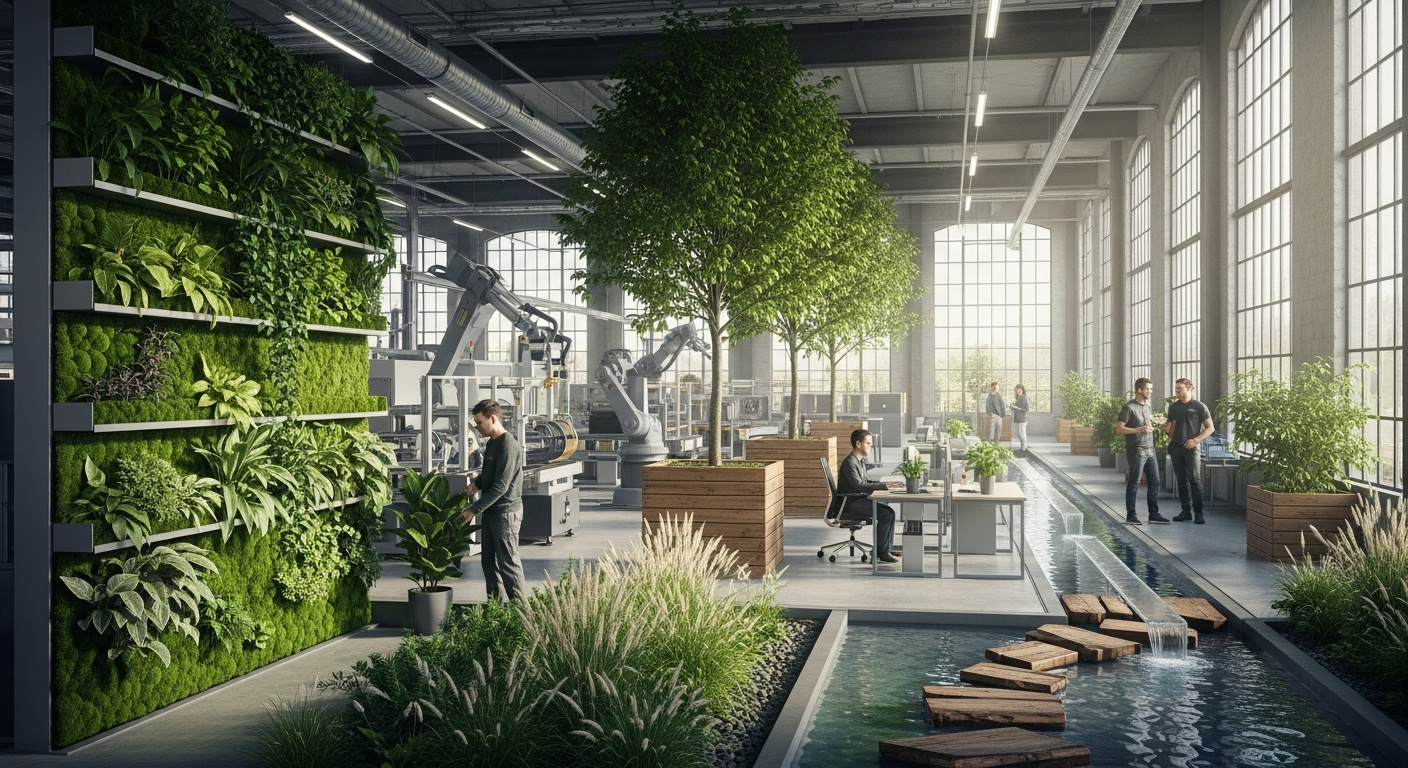Biophilic Design in Industrial Spaces: Boosting Productivity and Well-being
Integrating nature into industrial environments is revolutionizing workplace design. Biophilic design, a concept that incorporates natural elements into built spaces, is gaining traction in manufacturing facilities and warehouses. This innovative approach not only enhances aesthetics but also significantly impacts employee productivity, reduces stress, and improves overall well-being. Let's explore how this emerging trend is reshaping industrial landscapes and driving operational excellence.

Natural Elements in Manufacturing Facilities
Implementing biophilic design in industrial spaces involves thoughtful integration of natural elements. This can include incorporating living walls, indoor gardens, or even water features within the facility. Large windows that allow ample natural light and views of outdoor greenery are becoming common in modern industrial architecture. Some companies are taking it a step further by creating outdoor work areas or break spaces surrounded by nature, allowing employees to recharge in a more natural setting.
Impact on Employee Performance and Well-being
Research has shown that exposure to natural elements in the workplace can have profound effects on employee well-being and performance. In industrial settings, where work can be physically demanding and repetitive, biophilic design offers a refreshing contrast. Studies indicate that employees in environments with natural elements report lower stress levels, increased job satisfaction, and improved cognitive function. This translates to higher productivity, fewer errors, and reduced absenteeism – all crucial factors in industrial operations.
Overcoming Implementation Challenges
While the benefits of biophilic design are clear, implementing it in industrial spaces comes with unique challenges. Safety regulations, space constraints, and maintenance requirements must be carefully considered. Innovative solutions, such as artificial skylights that mimic natural light patterns or sound systems that play nature sounds, are being developed to overcome these obstacles. Companies are also exploring ways to incorporate biophilic elements without compromising the functionality of industrial equipment or disrupting workflows.
The Future of Industrial Biophilic Design
As awareness of the benefits grows, biophilic design is poised to become a standard feature in industrial architecture. Future trends may include the development of ‘smart’ biophilic elements that adapt to workers’ needs throughout the day. For instance, lighting systems that adjust color temperature to match natural circadian rhythms could further enhance employee well-being. Additionally, the integration of biophilic design with sustainable practices, such as green roofs or living walls that purify air, presents exciting possibilities for environmentally conscious industrial operations.
Practical Strategies for Biophilic Industrial Design
• Introduce indoor plants that thrive in low-light conditions and require minimal maintenance
• Install large windows or skylights to maximize natural light exposure
• Create outdoor break areas with seating surrounded by native plants
• Use nature-inspired colors and textures in interior design elements
• Incorporate water features like small fountains in common areas
• Install green walls or vertical gardens in high-traffic areas
• Use natural materials like wood and stone in construction and furnishings
• Implement circadian lighting systems that mimic natural light patterns
In conclusion, biophilic design represents a paradigm shift in industrial space planning. By bringing elements of nature into traditionally sterile environments, companies can create more humane, productive, and inspiring workplaces. As research continues to validate its benefits, biophilic design is set to play a crucial role in shaping the future of industrial operations, fostering a harmonious blend of nature and technology in the pursuit of operational excellence.





